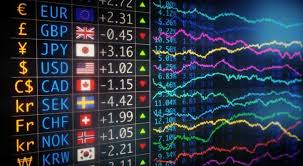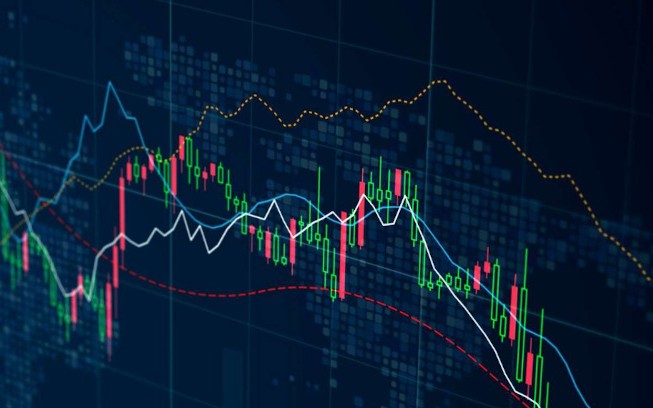trading5

Making the most of the foreign exchange market requires more than just a basic understanding of currency pairs. Traders often seek out resources that assist them in making informed decisions, one of which is utilizing forex trading signal Forex Vietnam trading signals. This article delves into what Forex trading signals are, their importance, and how they can be effectively integrated into your trading strategy.
What Are Forex Trading Signals?
Forex trading signals are suggestions or recommendations that indicate potential trading opportunities in the foreign exchange market. These signals are generated based on comprehensive analysis of various factors including technical indicators, market trends, and economic data. Traders use signals to make informed buy or sell decisions for currency pairs.
Types of Forex Trading Signals
There are generally two types of Forex trading signals:
1. Manual Signals
Manual signals are created by professional traders or analysts who analyze the market and share their insights with other traders. These signals often come in the form of emails, newsletters, or social media posts. Traders following these signals will rely on the expertise of the signal provider to make their transactions.
2. Automated Signals
Automated signals are generated by algorithms and trading systems. These signals provide real-time analysis and alerts based on pre-set criteria. Automated trading systems can scan the market for trading opportunities 24/7 and execute trades automatically based on the criteria defined by the trader.

The Importance of Forex Trading Signals
Utilizing Forex trading signals can greatly enhance a trader’s ability to make informed decisions. Here are a few reasons why they are important:
- Saves Time: Analyzing the forex market can be incredibly time-consuming. Trading signals allow traders to save time by receiving ready-made analysis.
- Market Insights: Signals provide traders with insights into market behavior and trends, which is particularly beneficial for those who are still learning the intricacies of forex trading.
- Risk Management: Many signals come with target price levels and stop-loss instructions, promoting disciplined trading and better risk management.
- Improves Decision Making: When used correctly, trading signals can significantly improve decision-making processes by providing data-driven recommendations.
How to Use Forex Trading Signals
To effectively utilize forex trading signals, consider the following steps:
1. Choose a Reliable Signal Provider
Choosing the right signal provider is crucial. Look for providers with a proven track record of successful trading signals, transparent performance reports, and positive reviews from users.
2. Understand the Signals
Before acting on a signal, take time to understand its content. A good signal will provide details such as the entry price, take-profit level, and stop-loss level. Make sure you comprehensively understand these terms before proceeding.

3. Implement a Strategy
Integrate trading signals into your existing trading strategy. Signals should not be the sole basis for your trades; rather, they should complement your overall trading plan, including your risk tolerance and trading style.
4. Keep a Trading Journal
Maintain a journal to track your trades and signals. Documenting the outcome of each trade will allow you to analyze the effectiveness of different signals and strategies over time.
Common Mistakes to Avoid
Even with the availability of trading signals, traders often make mistakes. Here are some common pitfalls:
- Ignoring Market Conditions: Always consider the broader market conditions before acting on signals. Economic news, geopolitical events, and market sentiment can drastically affect currency movements.
- Overtrading: Some traders fall into the trap of overtrading when they receive multiple signals. Be selective in the trades you make, focusing on high-quality signals.
- Lack of Patience: Successful trading is not about making quick profits. It requires patience and discipline to wait for the right setups.
Conclusion
Forex trading signals can be a valuable tool for traders looking to amplify their success in the foreign exchange market. By choosing a reliable signal provider, understanding the signals, and integrating them into your trading strategy, you can navigate the complexities of the forex market more effectively.
Ultimately, while trading signals can provide insights and recommendations, they should not replace personal due diligence and market analysis. Always be prepared to adapt your strategies based on changing market conditions and continue educating yourself on trading practices.

The Ultimate Guide to the Best Forex Trading Strategy
Forex trading can be an extremely rewarding venture if approached with the right strategy. With currency pairs constantly moving, traders need to adopt effective methods to capitalize on fluctuations in the market. In this article, we will explore various aspects of forex trading, including analysis techniques, strategies, and best practices for success. To dive deeper into this exhilarating world, consider visiting best forex trading strategy https://forex-vietnam.net/ for additional resources and insights.
Understanding Forex Market Dynamics
The forex market is the largest financial market globally, with a daily trading volume exceeding $6 trillion. Unlike stock markets, the forex market operates 24/5, providing traders with opportunities around the clock. Understanding market dynamics, including supply and demand factors, political events, and economic data releases, is critical to developing a successful forex trading strategy.
Types of Analysis in Forex Trading
Traders typically use three main types of analysis to inform their decisions: technical analysis, fundamental analysis, and sentiment analysis.
1. Technical Analysis
Technical analysis focuses on historical price movements to forecast future price changes. Traders use various tools and indicators such as moving averages, relative strength index (RSI), and Fibonacci retracement levels. By understanding chart patterns and utilizing indicators, traders aim to identify entry and exit points in the market.
2. Fundamental Analysis
Fundamental analysis takes into account the economic, political, and social factors that influence currency values. This analysis involves studying economic indicators like gross domestic product (GDP), interest rates, and employment data. Traders who utilize fundamental analysis often keep track of geopolitical events, central bank policies, and overall market sentiment.
3. Sentiment Analysis
Sentiment analysis is a less conventional approach but increasingly popular among traders. It examines the overall attitude of market participants toward a specific currency, typically as a contrarian indicator. For example, if the majority of traders are bullish on a currency, a sentiment-based strategy may suggest taking a bearish position.
Best Forex Trading Strategies
Now that we’ve covered the importance of market analysis, let’s dive into some of the best forex trading strategies.

1. Day Trading
Day trading involves buying and selling currency pairs within the same trading day. This strategy relies heavily on technical analysis and requires a deep understanding of market movements. Quick profit-taking is the goal, with traders often utilizing high leverage to amplify their gains. However, it’s essential to have a strict risk management plan due to the high risks involved.
2. Swing Trading
Swing trading targets capturing ‘swings’ in the market, holding positions for several days to weeks. This strategy is suitable for those who cannot dedicate the entire day to trading. Swing traders often rely on a combination of technical and fundamental analysis to maximize their returns over a more extended period.
3. Scalping
Scalping is a high-frequency trading strategy where traders make quick trades to capitalize on small price changes. Scalpers typically execute numerous trades in a day, aiming for small profits that add up over time. This strategy requires a lot of focus, quick decision-making, and efficient execution.
4. Position Trading
Position trading is the long-term approach to forex trading, where traders hold onto their positions for weeks, months, or even years. This strategy is ideal for those who prefer to trade less frequently and want to take advantage of fundamental trends. Position traders focus more on fundamental analysis and are less affected by short-term market fluctuations.
Risk Management in Forex Trading
Regardless of the strategy you choose, risk management is vital in forex trading. Traders should never risk more than they can afford to lose. Implementing stop-loss orders, diversifying currency pairs in a trading portfolio, and setting profit targets can help mitigate losses and protect profits.
1. Set Stop-Loss Orders
A stop-loss order is a predetermined point at which a trader will close a losing position to prevent further losses. This practice helps control risk and preserves capital.
2. Diversify Trading Portfolio
Diversification involves spreading your investments across various currency pairs to reduce overall risk. This strategy helps ensure that the loss in one currency does not significantly impact your entire trading portfolio.
3. Use Position Sizing
Position sizing refers to determining the size of each trade relative to your overall trading capital. A common rule of thumb is to risk no more than 1-2% of your trading account on a single trade. This approach allows for prolonged participation in the market without substantial risks.
Continuous Learning and Adaptation
The Forex market is continually evolving, and successful traders continuously learn and adapt their strategies. Attending webinars, reading insightful articles, and practicing in demo accounts are great ways to enhance your trading skills. Experience is a crucial part of developing confidence and proficiency in forex trading.
Conclusion
Success in forex trading is not guaranteed, but by adopting the right strategies, employing risk management techniques, and committing to continuous learning, traders can significantly enhance their potential for success. Tailor your approach, be disciplined, and always stay informed about market developments. With determination and the right strategy, you can achieve your forex trading goals.
